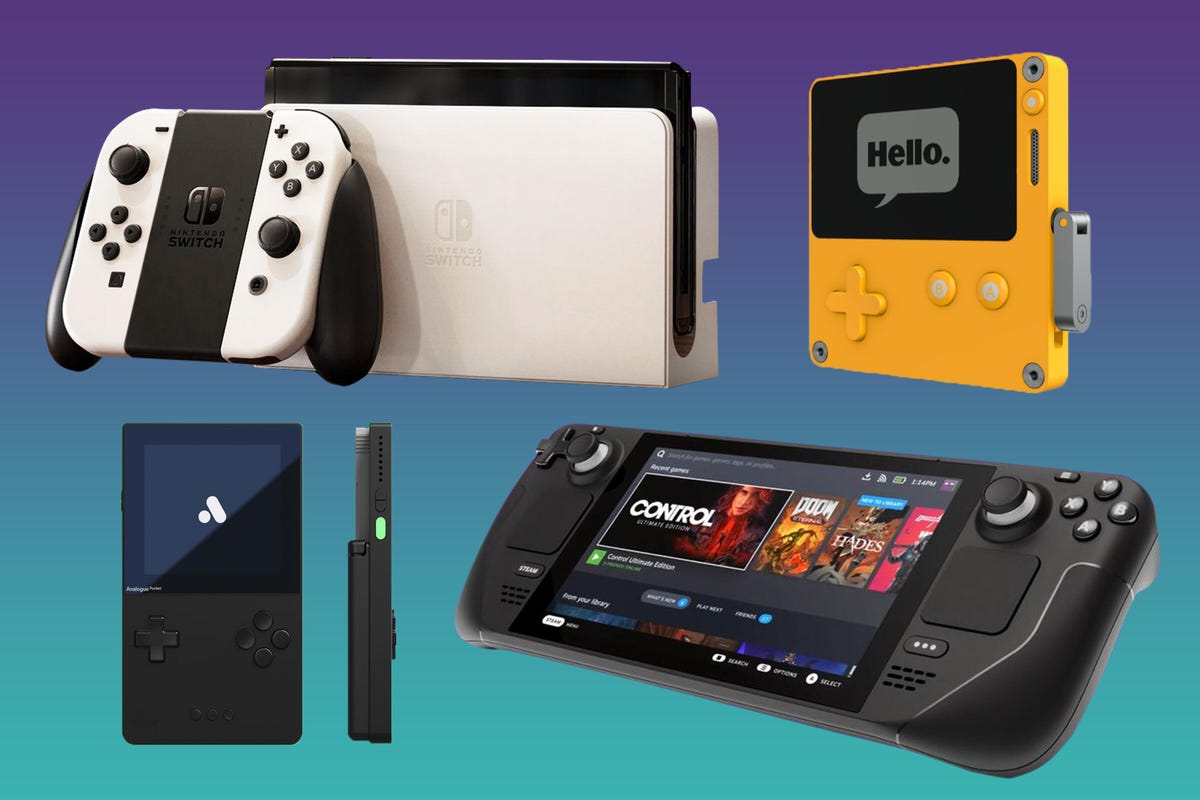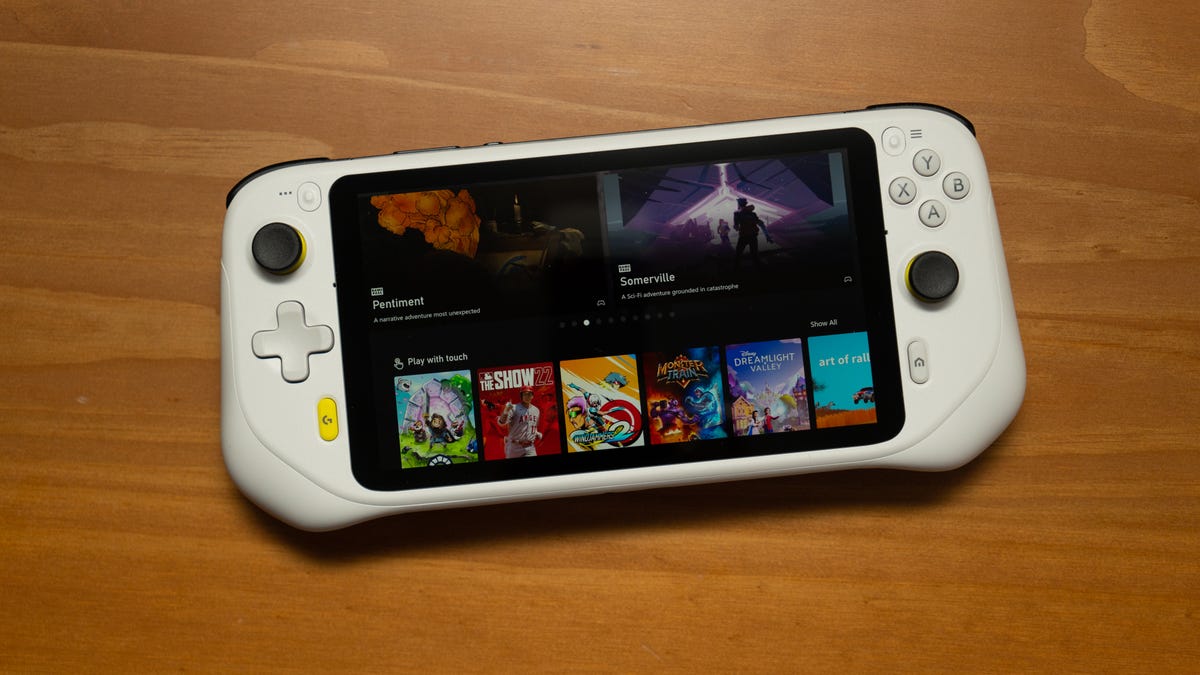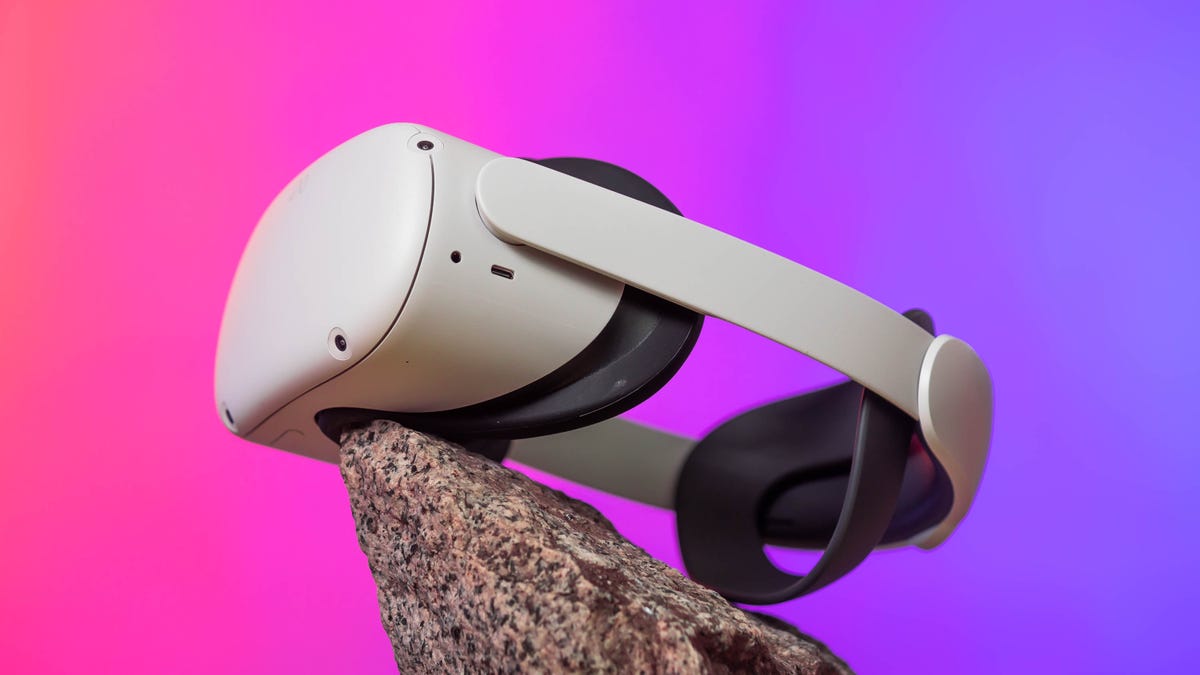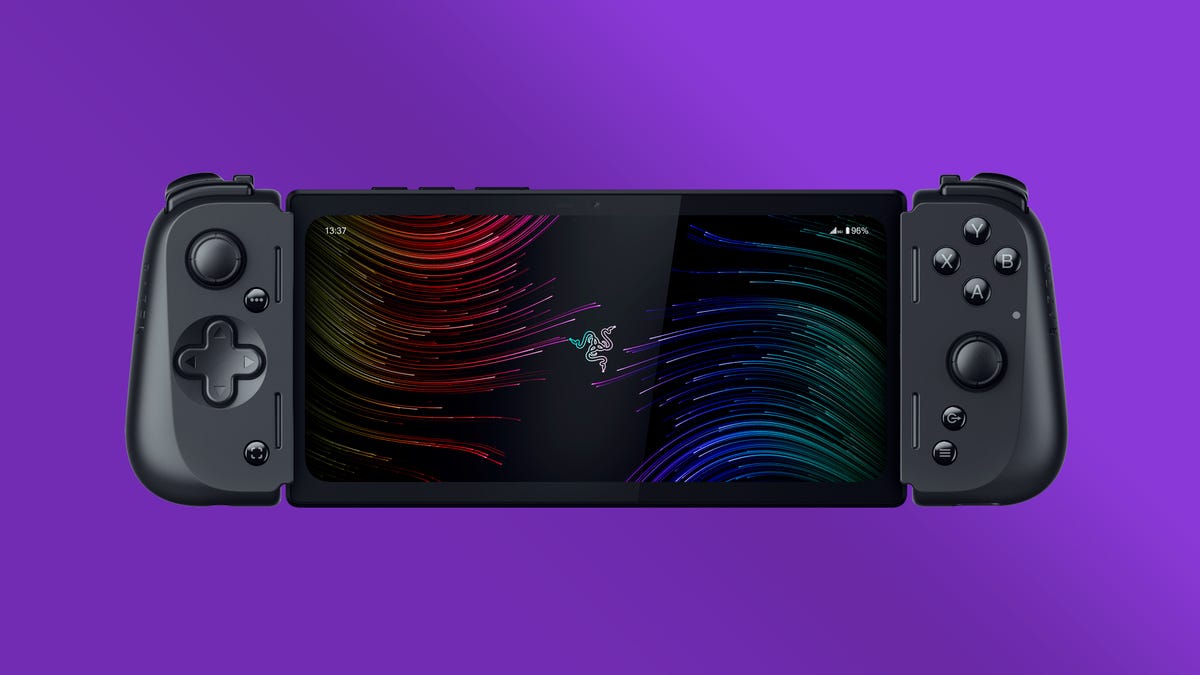Thanks to the Nintendo Switch, iPads, phones, VR headsets, and a ton of new gaming handhelds, I’m not gaming on my TV much anymore. In fact, gaming seems to be everywhere else other than the big panel hanging on my wall. Of course, that’s been the case before 2022. But thanks to the arrival of the Steam Deck and other handheld hardware, it feels like something’s finally happening that I’ve been waiting on for years: gaming tech is starting to become Switchified. I dreamed this would happen back in 2017.
Valve’s Steam Deck was the biggest new handheld arrival by far this year, and its popularity stands out on several fronts: as a gaming PC, it shows how software is finally starting to get more flexible and mobile, hopping between screens in a way that felt well overdue. But also, as another vehicle for streaming game services, it shows how gaming tech is starting to unbundle in a lot of strange ways.
The Nintendo Switch remains an aging, but strong, console. Mobile gaming feels like it’s starting to accelerate, thanks to cloud streaming apps and more excellent game controller cases, plus developments from mobile chip manufacturers like Qualcomm and new gaming tablets like the Razer Edge. Similarly, Logitech’s G Cloud handheld, arriving recently, is another flavor of mobile: a type of Android-based mobile device, but made to lean on game streaming.
And I didn’t even mention my favorite quirky indie handhelds, the Analogue Pocket and Panic Playdate, which have helped me rediscover tons of old games and plenty of indie newbies, too.
Can we also count VR headsets as handhelds? No, not really, although future devices like the Pimax Portal show some possibility for handhelds and VR to dovetail in ways you may not have been thinking about.
Here’s why it all matters.


Nintendo Switch, Panic Playdate, Analogue Pocket, Steam Deck: they’re all signs of gaming’s handheld resurgence.
composite by Sarah Tew/CNETSteam Deck: PCs can be handhelds now
Valve’s Steam Deck did it. The handheld Steam-compatible game system seemed like an impossible dream before it launched, but the hardware really does play tons of PC games well, and has proven to be one of the biggest gaming surprises of this year.
Valve doing it shows how other manufacturers could give it a go, too: in fact, companies like Dell and Razer already have, in a sense, via previous prototype experiments. The Steam Deck lives, though, and now there’s no reason not to make more of them.
The Steam Deck’s easy sleep/wake functions and its TV docking make it feel every bit as modular as a Switch, even if its controllers don’t detach. It’s the flexibility of the Steam Deck’s OS that shows a lot more promise. Running a variety of games or even apps, and being able to stream games, gives it the possibilities that we’d hoped the Nintendo Switch might gain someday. The Switch’s older processor limits what it can do, but the Steam Deck advances those ideas five years forward. Really, we knew this already with phones in our pockets that are as powerful as laptops, but gaming handhelds can do a lot more at also being full-fledged machines to connect to a much more cross-platform world.
I’m really curious where Valve goes next: in particular, to VR. Valve’s been active in VR for years, and is expected to make its own standalone “Deckard” VR headset in the near future. Could a new Steam Deck be compatible? It seems more than likely.


The Logitech G Cloud emphasizes game streaming. More handhelds will.
Lori Grunin/CNETStream Machines: Games can live anywhere
In a sense, Logitech’s G Cloud handheld and the Razer Edge tablet have a lot in common. CNET didn’t love the G Cloud, but the idea of it — an Android tablet with controls and the ability to stream games — is like a custom-made version of what you can already do with a phone or tablet and a game controller. The Razer Edge feels like a more advanced version of a similar idea, building a modular tablet with controllers around a higher-powered Qualcomm processor that’s capable of running games better, but also of streaming games as well.
These both remind me of the promises made way back by the Nvidia Shield, a tablet that was way ahead of its time and began to play with game streaming back in 2014.
Streaming games have finally come of age, both in the cloud and locally from console to handhelds. You may very well be doing this already with your phone or tablet. But, between the rise of very good game controller cases like the Backbone One and Razer Kishi and these types of specific standalone devices, it looks like mobile options could be multiplying.


The Analogue Pocket (left) and the Panic Playdate (right). These handhelds made me rediscover games both old and indie, outside traditional app stores.
Scott Stein/CNETAnalogue Pocket and Panic Playdate: Rise of the new indies
Analogue’s ultimate retro handheld, the Pocket, and Panic’s crazy crank-enabled Playdate are very different pieces of hardware. Yet, they both point to a similar trend in gaming. The Pocket plays original Game Boy, Game Boy Advance and even Sega Game Gear game cartridges (with an adapter), and can run virtual hardware cores to recreate other game platforms. The Panic Playdate has its own season of included indie games that beam onto the handheld via Wi-Fi once a week. Both, however, can also sideload indie efforts made to run specifically on these systems.
Gaming portals like itch.io have become my most-visited places, as I check to see what experimental games people make available for Pocket or Playdate. Indie game designers create amazing efforts for all sorts of platforms: you don’t need a Playdate or Pocket for them. But these systems feel like vehicles that are ready to bring more indie efforts to life, and both feel like they’re living entirely outside of the world of the big game studios and hardware manufacturers. Maybe there’s room for more experimentation like this.


The Quest 2 is standalone. Future VR and AR headsets will likely dovetail even more with handheld devices.
James Martin/CNETCould VR and AR be a doorway to more?
Arriving soon, the Pimax Portal is a curious sign of how tech could merge. Pimax, a manufacturer of VR headsets, is making a Switch-like Android gaming handheld that can also dock into a VR headset, becoming a handheld and standalone VR system all at once. It’s a return to the “VR goggles” concepts of early phone-based hardware like the Samsung Gear VR and Google’s Daydream, but in a potentially far more optimized and advanced format. I haven’t tried the Portal yet, but am really curious to. It’s an idea I could see more companies trying out, especially if it works better than those old limited-motion phone goggles.
Many upcoming VR headsets and AR glasses will start connecting with phones and smaller puck-like processors: the Magic Leap 2 is made this way, and Qualcomm’s next wave of AR glasses are designed to work with phones. Valve’s rumored standalone VR headset, Deckard, could possibly do the same with future Steam Decks.
Maybe Apple has similar plans in mind for how its VR headset will work with its phones and iPads. As headsets get smaller, more glasses-like, and lean on passthrough cameras and AR more, handheld accessories like game systems seem like a natural fit.
Nintendo had the right idea by making those Switch controllers slide off and work as little motion-sensitive magic wands…maybe the future of mobile gaming has been right in front of us all along.


The Razer Edge, a 2023 device we’re expecting soon.
RazerWhere this leads to in 2023
We’re already overdue for a truly new Nintendo Switch, and the Steam Deck seems bound for a sequel (although maybe not in 2023). We know a new wave of stand-alone VR headsets is on its way, and new phones and tablets are perpetual givens. The success of the Steam Deck, in particular, seems to open the door in ways that should impact both PC and console gaming. The Steam Deck was announced back in the middle of 2021, which means competitors have had a long time to prepare. But I’m also excited to see where truly decoupled indie gaming hardware could go: The Pocket and Playdate show all sorts of ways handhelds could live beyond traditional app store gateways. Cloud-connected gaming opens new pathways across hardware, too. It’s time for any mobile hardware to be more aware and flexible in its gaming strategies, because all the pieces are there. Of course, the handheld game system you’re most likely to be using in 2023 is your phone, but expect more dedicated gaming hardware to push the boundaries, too.
